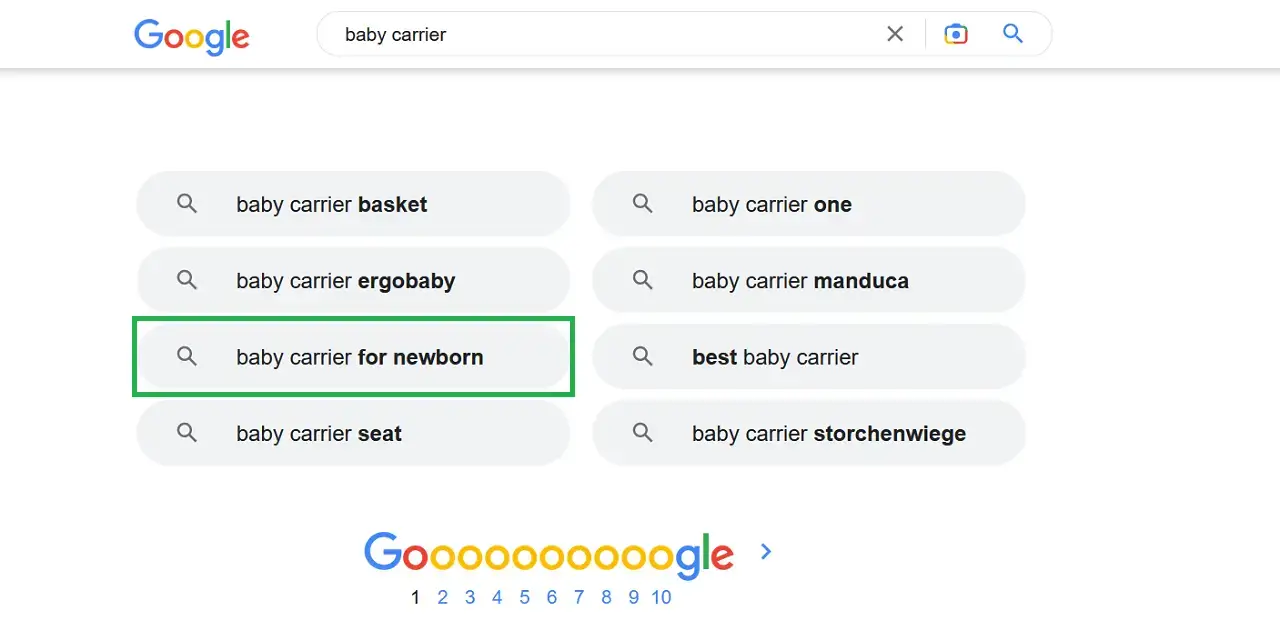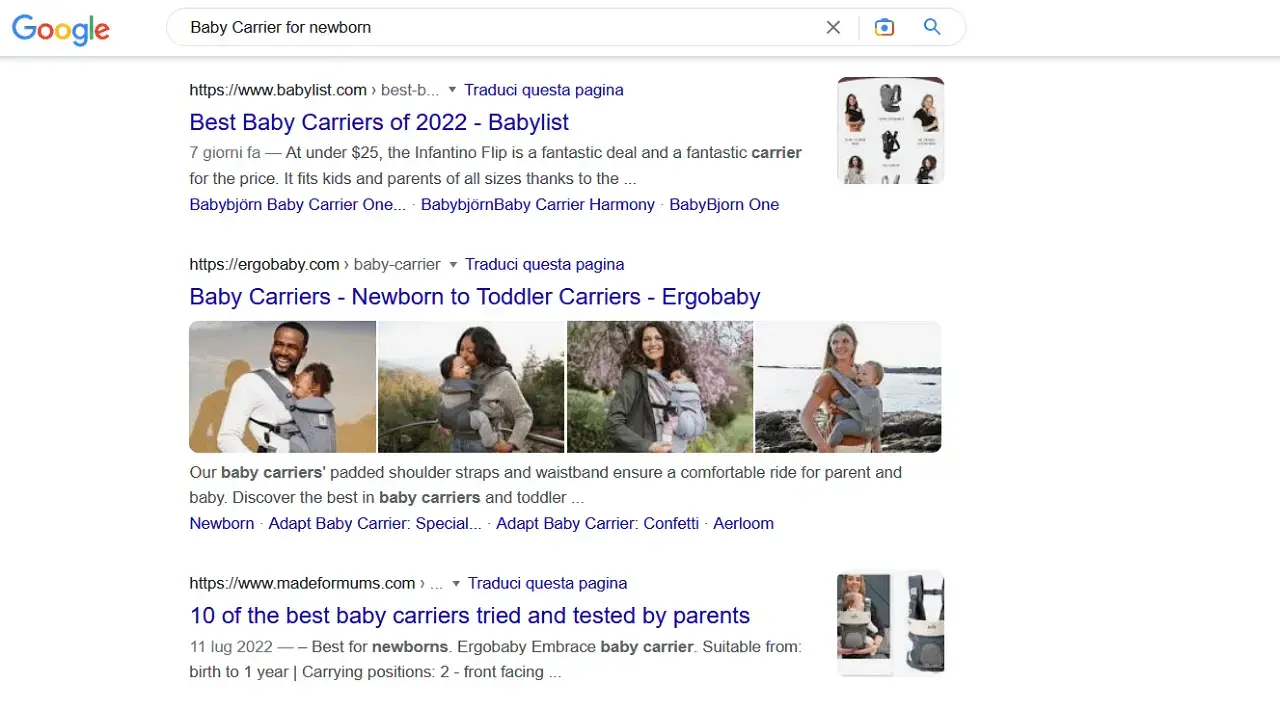Keyword research is the first step in any SEO strategy to position your eCommerce or blog because if you don’t appear in Google search results and you don’t have an SEO-optimized website, you will miss the opportunity to be found by the people looking for your product or service.
Not appearing on Google will drastically decrease your revenue. In the case of a dropshipping website, you cannot rely only on social media advertising if you want to have profitable e-commerce.
So I’ll teach you how to do dropshipping keyword research for content (or at least how I do it because keyword studies are like smartphones, everyone has their own). Continue to read the guide step by step.
What is keyword research?
Keyword research, study or research of keywords, is the search and analysis of the words or phrases (what we call keywords) a user uses in the Google search engine to resolve their search intention.
This step means that when I write an article like this in which I explain how to do dropshipping keyword research, logically, I am interested in appearing in Google with keywords like “dropshipping keyword research,” “keyword research for dropshipping” (these are examples of keywords).
So I have to research what searches (words or phrases) like these are the ones that interest me to appear in Google results.
What is the purpose of dropshipping keyword research?
Well, keyword research for dropshipping websites is mainly used to know which keywords you need to use to reach your goals (in this case, sell your products, etc.) and what importance you should give to each of them based on search volume, competition, etc.
But the thing does not end there because a keyword study can also be approached as a market study and help you define the web architecture of the site, its sections or categories, and the contents it should deal with in general.
You can see how important a good keyword study can be.
Today, more than ever, it is necessary to take into account what research intention is hidden “behind” these keywords that are analyzed because, for example, it is not the same as the user wants to buy a product rather than one who seeks a guide as in this case, so let’s now define the types of keywords.
What are the different types of keywords?
SEO experts usually define keywords in four types based on search intent. These are:
- Informational keyword
- Navigational keywords
- Commercial keywords
- Transactional keywords
1. Informational keyword
Typically, users perform a search to obtain general or specific information on a subject but with no purchase intention. For example, two examples would be “How to start a dropshipping business?” or “How to sell on Zalando?“. They are questions (with an informative intention) that the user seeks to solve. The intention is to obtain new knowledge (which always works well).
2. Navigational keywords
The user searches with the specific brand name or its products to access the official website. A good example would be searching for “Woosa” or “Woosa support” to access our official website and resources. By entering the name, the user can directly access the information sought.
3. Commercial keywords
Before buying a product or acquiring a service, the user searches to be fully informed and choose the best option. Example? Example! The search for “Best WooCommerce dropshipping plugin for WordPress” or “Adyen vs. Mollie Comparison” reflects the intention of this type of keyword; the user wants to acquire something and investigates the best option.
4. Transactional keywords
In these types of keywords, the intention is clear, to make a purchase. The user performs a search to acquire a product or service. Some keywords used in searches are “buy wireless headphones,” “wireless headphones price,” or “wireless headphones discount.” It can be seen how the user wants to buy wireless headphones and searches where to buy them, their price and if there is any discount.
Tools for keyword research
When we talk about tools to do a keyword study, we refer, in general, to tools to search for keywords.
And believe me, there are a lot of tools:
- Ahrefs Keywords Explorer
- Google keyword planner from Google Ads
- SEMrush Keyword Magic Tool
- Ubersuggest by Neil Patel (Free)
And more:
- Keywords Everywhere
- KeywordTool.io
- Keyword Researcher Pro
- KeywordShitter
- Mangools KW Finder
- SERanking
- Moz Keyword Explorer
- etcetera.
But be careful because there are different types of tools that can be used in keyword research.
Depending on what keyword tools are used for, they could be classified into these four types:
Keyword suggestion tools: These tools usually have a keyword search engine and suggest others related to the ones it finds that you could use in your content.
Competitor keyword research: they are used to study the competition, analyze how they use keywords if it would be difficult to position themselves in Google better than them, etc.
Keyword density tool: these tools calculate the density of keywords within a piece of content (the relationship between the number of times it is used and the total number of words in the text).
Keyword research tool: these would be the tools with which you would carry out the study and analysis of keywords themselves to choose the ones you are going to use (some tools of this type are complete and have their keyword search engine, they suggest others related, measure density, etc.).
Some of these tools that I told you before could be classified only in some of these specific types; For example, the Google Ads keyword planner would be of the keyword suggestion tool type, but there are much more complete keyword research tools types such as Ahrefs (the one I usually use) and SEMrush that have almost all the functionalities on the same site.
Let’s move on to practice and do keyword research for dropshipping.
Accelerate Your E-commerce Goals: Enroll in Woocademy’s 7-Day Challenge for Your WooCommerce Dropshipping Store.
[block id=”cta-blog-7-day-dropshipping-challenge”]
How do dropshipping keyword research?
We have already reached the point where I will explain how to do keyword research for a dropshipping eCommerce step by step.
We must use commercial and transactional keywords for dropshipping eCommerce that sells products. In addition, since it is mostly products and there is a lot of competition, we have to look for long tail keywords with 4-5 words because they are easier to target than shorter keywords. Let’s start with the sample keyword:
1. Main keyword and search intent
When doing a keyword study, you usually already have a “main” keyword in mind to give priority.
It is the word or phrase that you think users use when searching on Google, with which you think your content should appear to resolve the intention for which they search (answer a question, learn something, achieve something, etc.). I say “you believe” because maybe later you will discover a keyword that is searched for more and better defines what the user is looking for.
The first thing to do is something as simple as searching Google (better in incognito or private mode) for the keyword that you have in mind. Do it without accents, even if it has them because people tend to do more searches without accents (Google understands this perfectly).
I was thinking of a “baby carrier” that can be a good product to sell in dropshipping.

As I said, we need to go for long-tail keywords with a better CTR. For this sample, I choose “baby carrier for newborn.”
2. Search the long-tail keyword in Google

The point is that this way, you can analyze the results page that Google returns (called SERP, Search Engine Results Page) and extract very important information such as:
User intention that Google “understands”: the idea that you have in mind of why the user searches for your keyword if Google understands something else is useless.
Take a good look at the results that Google is placing in the first positions and the intention that they resolve because that is the one that Google understands and the one that you should resolve as well.
Our case is curious because Google puts articles in the first positions that are not about one product but a list of best products optimized with commercial keywords, ideal for dropshipping sites.
So we have to give Google what it wants; let’s continue our keyword research and create an article where we promote our products
3. Search for the related keywords
Ok, you already have your “main keyword”, the user’s search intent, what google prefers as content and the competition.
Now it’s time to find and define all the keywords for the article, and here we can divide our type of keywords by:
- best keyword – Commercial keywords that start with “best.”
- main keyword – The main keyword a page is optimized for
- secondary keyword – different but related to the main keyword
- keyword variation – appropriate synonyms, abbreviations, plurals, and partial match.
I will use Ahrefs as a keyword research tool where I will put my “main keyword” to get other types.

In this case, I have found a lot of long-tail keywords, or what is the same, other searches that people do related to your main keyword. Let’s organize them by type. That will help us create well-optimized Seo content that will solve the user’s needs.
4. Organize your keyword lists

As you can see from the image, I have organized the keywords in this way:
- best keyword: best baby carrier for newborn
- main keyword: baby carrier for newborn
- Secondary keyword: how to use baby carrier for newborn, can I use baby carrier for newborn, best baby carrier for newborn in summer, best baby carrier for newborn to toddler
- keyword variation: carrier for newborn baby, baby carrier for small newborn
To make your work easier, we share our work template with you. Write us the email in the form below so we will send you the template and you can stay updated with our latest guides.
This example fits a dropshipping shop that sells multiple products of the same kind and is ideal for creating an article that converts. The dropshipping keyword research process for a product is similar, it only changes the way of doing the On SEO Page, but we will see this in the next articles.
Download free template
Download our free excel keyword work template. We’ll send it directly to your mailbox.
hbspt.forms.create({
region: “eu1”,
portalId: “26319551”,
formId: “76bd806b-fd6f-401e-ad97-afdb0cf4e03a”
});
Conclusion
Well, that’s it; you already have your keyword research, and now is time to write your content and blow it up in Google results.
Remember that a good SEO strategy takes time until it begins to give results and positions itself in the keywords you have been researching. Don’t expect this to happen overnight, unless you are an authoritative website.
It will not be perfect at first, but little by little, you will get the point of doing keyword research, and you will see that it is much easier than it seems.
And if you have any questions about any of the steps or the tools I use, feel free to leave them in the comments if I can help you.
In conclusion, it’s not about stuffing; it’s about using keywords intelligently. But first, search for these keywords very carefully.
Doing keyword research should be the beginning of any sustainable SEO strategy. The keyword research result will be an extensive list that any online business would like.
The hardest part is yet to begin: writing your content.
You may also be interested in Ultimate Guide to On-Page SEO.
